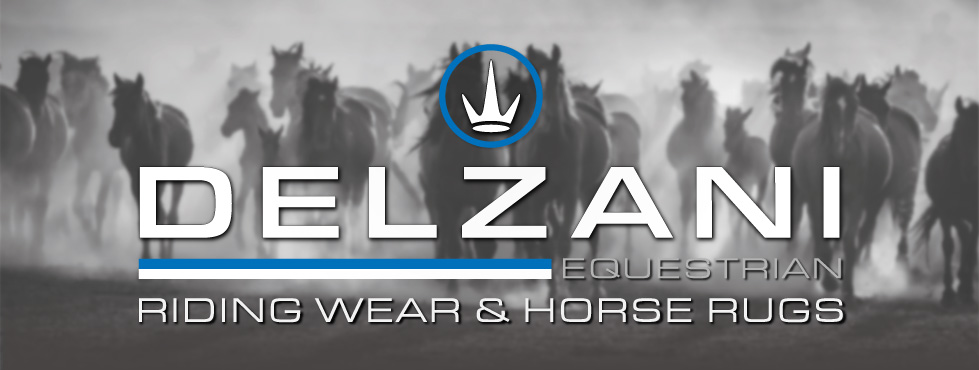Do Fly Masks Really Work for Horses? Fit, Safety and Comfort in Australian Summers

Understanding How Fly Masks Work and When to Use Them
Updated September 2025
A practical guide for Australian horse owners on how fly masks protect against flies, dust, and UV exposure - covering fit, airflow, comfort, and daily care to keep horses cool and irritation-free through summer.
Every summer in Australia, horse owners face the same battle - flies around the eyes, dust whipping across paddocks, and the constant risk of sunburn on pink skin. For many riders, the obvious question comes up: do fly masks really work, or are they just another accessory?
The truth is, a well-fitted fly mask can do more than stop pests. It protects delicate eyes, reduces the risk of infection, shields skin from UV damage, and helps your horse stay calm in the paddock or float yard. But masks only deliver those benefits if they fit correctly, are made from breathable materials, and are used with a bit of common sense in our tough climate.
How Fly Masks Protect More Than Just Eyes
Many owners buy their first mask to stop flies, then quickly notice other benefits. Flies aren’t just irritating - they spread bacteria and can inflame the eye surface. A good mask blocks that access point, helping prevent conjunctivitis and rubbing injuries. For light-skinned horses, masks with a structured nose flap can also reduce sunburn and blistering.
Australia’s dust storms and dry spells add another layer. Wind-driven grit can scratch the cornea, while long grass seeds or burrs around dams easily flick into eyes. The raised mesh of a fly mask keeps debris out while maintaining vision.
UV Protection in the Harsh Australian Sun
Our UV is stronger than almost anywhere else. Horses with pink skin around the eyes or muzzles are especially vulnerable to sunburn, and chronic exposure can contribute to long-term issues. Quality masks use UV-stabilised mesh that blocks a significant percentage of harmful rays, helping protect delicate tissue during peak summer months.
Fit: Clearance, Comfort and Security
A mask is only effective if it fits correctly. The best designs use shaped seams or domed mesh that sit clear of the eyes, preventing eyelashes from rubbing. Look for wide, soft straps that hold the mask steady without creating pressure points. A good rule is to fit snugly under the jaw but still allow a finger’s width underneath for comfort.
Delzani’s Fly Mask Veil is built with these details in mind - raised ballistic mesh, fleece padding on contact points, and an adjustable fit designed for daily use in Australian yards.
Heat and Airflow: Keeping Horses Comfortable
One of the biggest concerns for owners is heat build-up. In humid states like Queensland, heavy fabric traps sweat and can cause scalding. The solution is breathable, open-weave mesh that holds its shape away from the skin. This allows constant airflow, keeping horses cooler than if they were left stamping and head-shaking in full sun.
Daily Care and Checks
Like any piece of gear, masks work best when they’re cared for. Shake out dust daily, rinse when sweaty, and rotate between at least two masks so one can dry while the other is in use. Always check under the mask each day for burrs, sand or rubs - prevention is far easier than treating sores once they’ve formed.
When to Use and When to Skip
Masks are a smart choice in peak fly season, in dusty paddocks, or for light-skinned horses. They’re less critical in winter when insect pressure drops. On extreme fire danger days, many owners prefer to remove synthetic gear if horses are unsupervised. The key is flexibility - use masks as a tool, not a 24/7 rule.
How Masks Compare to Fly Bonnets
Masks cover the eyes and face, making them ideal for paddock turnout. Bonnets, on the other hand, fit under a bridle and protect the ears during ridden work. Many riders use both: a mask for daily turnout, a bonnet for training or competition. To explore when a bonnet is better, see our article “Fly Bonnets for Horses: Do They Really Stop Head-Shaking and Distraction?”.
Why Choose Delzani
Delzani’s masks are designed for Australian summers - durable ballistic mesh, structured domes for eye clearance, fleece padding at sensitive points, and secure adjustable straps. Options like enclosed ears or nose flaps let you customise protection for your horse’s needs.
Read more in our broader guide: Do Horses Really Need Fly Masks and Bonnets in Australia?
Protect your horse’s eyes, skin and comfort this summer. Explore Delzani’s full fly mask range - built tough for Australian horses.
Written by Jane Griffiths - An experienced Australian horse owner and product developer with over three decades immersed in equestrian life. Jane has spent years refining horse rugs, tack, and riding apparel to better suit Australian climates. She has enjoyed countless weekends at gymkhanas, show jumping events, and pony club competitions with her daughter, and still loves hitting the trails with friends whenever she can. Her lifelong passion for horses and hands-on understanding of equine comfort continue to shape her practical, rider-first approach to horse care and product design.
Related Equestrian Guides
Fly Masks & Fly Veils for Horses
Keep your horse calm, protected, and focused this summer with Delzani fly masks and veils, breathable comfort, Sun defence, and rider-trusted performance built for Australian conditions.
Fly Mesh Boots Troubleshooting & Care: Stop Slipping, Rubbing and Wear
Tired of fly boots that slip, rub, or wear out halfway through summer? This guide shows how the right fit, mesh and care routine keep boots secure, breathable and long-lasting plus why Delzani Fly Mesh Boots are built to handle Australian conditions.
Fly Bonnets for Horses: Do They Really Stop Head-Shaking and Distraction?
Australian riders often ask if fly bonnets are just for looks or if they really help. Discover how bonnets reduce head-shaking, improve focus, and protect sensitive ears from flies during training, trails, and competition.
Can Horses See Through Fly Masks Clearly? Vision & Safety in Australia
Can horses see clearly through fly masks? Yes. This guide explains how mesh veils, deluxe bonnets, and the Apollo SkyBreeze differ in vision, safety, and comfort, helping Australian riders choose the right style for their horse.
Can Fly Masks Cause Sweating or Rubbing? What Australian Owners Need to Know
Australian guide to horse fly masks, covering sweating, rubbing, fit, daily care, climate considerations, and how Delzani’s breathable designs protect horses from flies, dust, and UV without causing irritation.











